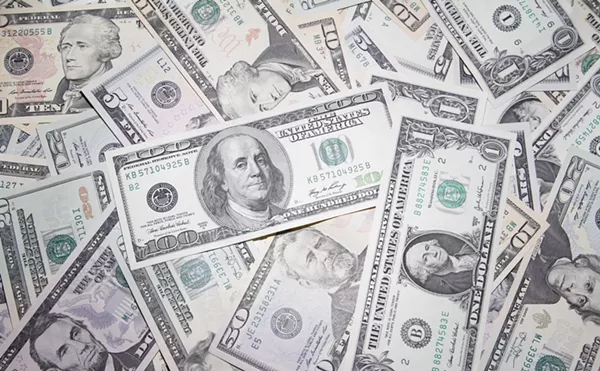Since the implementation of the Affordable Care Act, the percentage of Texans without health insurance has dropped dramatically, from 27 percent in 2013 to 20.8 percent this year, according to Gallup. This is good news, as it means that a couple million more people in the state have greater access to preventative care and less of a chance of being bankrupted by hospital bills. The bad news is that Texas, thanks in large part to its refusal to expand Medicaid under Obamacare, still has the highest percentage of uninsured residents in the country. No other state cracks 20 percent.
But simply counting the number of uninsured residents is a relatively blunt way of gauging health care access and quality. A much subtler measure is the federal government's National Healthcare Quality and Disparities Report, which looks at upward of 200 criteria. This survey isn't new, having been published every year since 2003. What is new is that the email press blasts with subject lines like "Texas among the lowest performing States in the nation when it comes to overall healthcare quality."
This isn't, the folks at the Department of Health and Human Services swear, a not-so-subtle dig at Texas politicians who loudly denounce federal healthcare policy at every opportunity. Rather, says Ernest Moy, who heads the data collection effort, "We put out state data in hopes that a state policymaker [or state news outlet] will explore why a change might have occurred. We think that people in-state are better positioned to give meaning to the data we track."
Policymakers in Texas have plenty to explore. The state comes in third to last in the overall ranking, ahead of only Louisiana and Oklahoma, which is the rough equivalent of beating a couple of asthmatic 4-year-olds in a foot race. Similarly, Texas falls significantly below the national average in such categories as patient safety, healthy living, HIV/AIDS, nursing homes, etc. Not only that, in many cases it has fallen further below the national average than it was in the past, which either means that care has gotten worse (unlikely but possible) or that other states have gotten better faster (more probable).
So, what specifically are Texas' biggest failures? Of the 200-odd categories, Texas fares worst in "New AIDS cases per 100,000 population age 13 and over" (489 percent below the national average); "Hospital admissions for uncontrolled diabetes without complications per 100,000 population, adults" (383 percent); and "Avoidable admissions for hypertension per 100,000 population age 18 and over" (332 percent).
Not that Texas is a complete failure. It does relatively well on treating cancer thanks to a low death rate. Same with chronic kidney disease. And it significantly outperforms most of the country in "Adolescents females ages 16-17 who received 1 or more doses of tetanus toxoid, reduced diphtheria toxoid and acellular pertussis (Tdap) since the age of 10 years" (by 66 percent) and "Persons aged 16 to 17 years who received 1 or more doses of meningococcal conjugate vaccine" (by 34 percent).
One important caveat to keep in mind: Most of the data included in the study are from 2012, so many of the changes initiated by Obamacare won't have shown up, which might have boded well for Texas' future performance had it not dragged its feet so thoroughly on implementation.

Audio By Carbonatix
[
{
"name": "GPT - Billboard - Slot Inline - Content - Labeled - No Desktop",
"component": "21721571",
"insertPoint": "2",
"requiredCountToDisplay": "2"
},{
"name": "STN Player - Float - Mobile Only ",
"component": "21861991",
"insertPoint": "2",
"requiredCountToDisplay": "2"
},{
"name": "Editor Picks",
"component": "17105533",
"insertPoint": "4",
"requiredCountToDisplay": "1"
},{
"name": "Inline Links",
"component": "18349797",
"insertPoint": "8th",
"startingPoint": 8,
"requiredCountToDisplay": "7",
"maxInsertions": 25
},{
"name": "GPT - 2x Rectangles Desktop, Tower on Mobile - Labeled",
"component": "22608066",
"insertPoint": "8th",
"startingPoint": 8,
"requiredCountToDisplay": "7",
"maxInsertions": 25
},{
"name": "Inline Links",
"component": "18349797",
"insertPoint": "8th",
"startingPoint": 12,
"requiredCountToDisplay": "11",
"maxInsertions": 25
},{
"name": "GPT - Leaderboard to Tower - Slot Auto-select - Labeled",
"component": "17357520",
"insertPoint": "8th",
"startingPoint": 12,
"requiredCountToDisplay": "11",
"maxInsertions": 25
}
]











